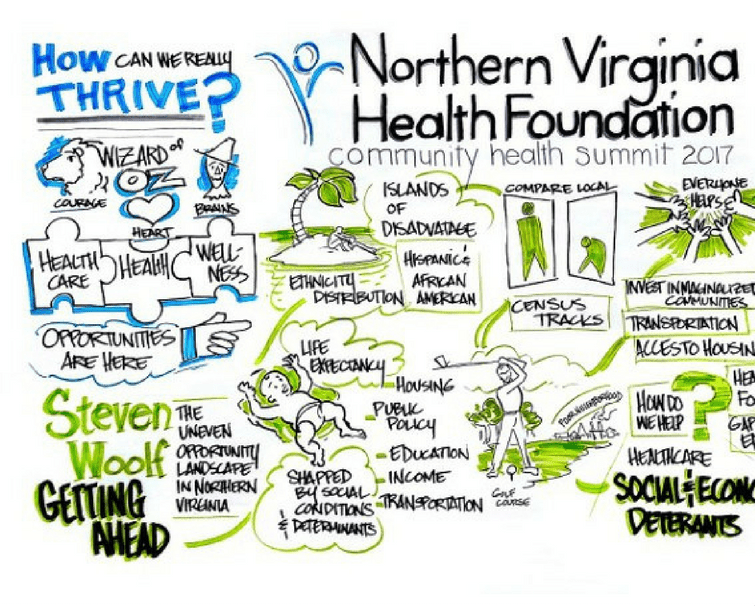Foundation News
The Challenge to Create a Healthier—and More Equitable—Northern Virginia
By: Northern Virginia Health FoundationIslands of Disadvantage in a Sea of Affluence
Culmore is one of 15 “islands of disadvantage” in our region where people struggle to get ahead, even as their neighbors enjoy a much higher quality of life, with access to far more resources and opportunities, according to a new report.The report, produced for the Northern Virginia Health Foundation (NVHF) by the Center on Society and Health at Virginia Commonwealth University (VCU), reveals stark social and economic disparities, sometimes between neighborhoods separated by only a few blocks. It was also the focus of a Nov. 28 summit that brought together policymakers and community leaders from across the region to explore how best to address these inequities and ensure that all Northern Virginians have an opportunity to thrive.There’s a tendency to think of Northern Virginia as a place with abundant resources and few problems. And it’s true that, overall, the opportunity landscape for the region is strong. But, as Steven Woolf, M.D., report author and director of VCU’s Center on Society and Health, points out, the overall picture obscures what’s happening beneath the surface.When you look at census-tract data, as VCU did, you see a much different picture: clusters of poverty where people struggle against crushing housing costs, low levels of education, inadequate public transportation, and few opportunities for advancement. People of color are disproportionately located in disadvantaged communities, and, as a result, face greater challenges.Among the report’s findings at the neighborhood level:Preschool: In 44 census tracts across the region, 99% of children ages 3 to 4 attended preschool, but in 15 tracts, fewer than 0.1% of preschool-age children were enrolled.
Income: Median household income for the region was approximately $122,000 per year, yet 12 census tracts had median household incomes below $50,000 per year.
Housing: Housing problems—defined as incomplete plumbing or kitchen facilities, overcrowding, or cost burdens exceeding 30% of annual household income—were reported across the region. In 44 tracts, more than two-thirds of renters reported such problems.
Health care: In 45 census tracts, more than 25% of the population had no health insurance.

